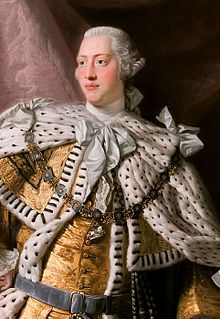
| History of the United Kingdom |
|---|
 |
|
|
The history of the monarchy of the United Kingdom and its evolution into a constitutional and ceremonial monarchy is a major theme in the historical development of the British constitution.[1] The British monarchy traces its origins to the petty kingdoms of Anglo-Saxon England and early medieval Scotland, which consolidated into the kingdoms of England and Scotland by the 10th century. Anglo-Saxon England had an elective monarchy, but this was replaced by primogeniture after England was conquered by the Normans in 1066. The Norman and Plantagenet dynasties expanded their authority throughout the British Isles, creating the Lordship of Ireland in 1177 and conquering Wales in 1283. In 1215, King John agreed to limit his own powers over his subjects according to the terms of Magna Carta. To gain the consent of the political community, English kings began summoning Parliaments to approve taxation and to enact statutes. Gradually, Parliament's authority expanded at the expense of royal power.
From 1603, the English and Scottish kingdoms were ruled by a single sovereign in the Union of the Crowns. From 1649 to 1660, the tradition of monarchy was broken by the republican Commonwealth of England, which followed the Wars of the Three Kingdoms. Following the installation of William and Mary as co-monarchs in the Glorious Revolution, a constitutional monarchy was established with power shifting to Parliament. The Bill of Rights 1689, and its Scottish counterpart the Claim of Right Act 1689, further curtailed the power of the monarchy and excluded Roman Catholics from succession to the throne.
In 1707, the kingdoms of England and Scotland were merged to create the Kingdom of Great Britain, and in 1801, the Kingdom of Ireland joined to create the United Kingdom of Great Britain and Ireland. The British monarch was the nominal head of the vast British Empire, which covered a quarter of the world's land area at its greatest extent in 1921.
The Balfour Declaration of 1926 recognised the evolution of the Dominions of the Empire into separate, self-governing countries within a Commonwealth of Nations. In the years after the Second World War, the vast majority of British colonies and territories became independent, effectively bringing the Empire to an end. George VI and his successors, Elizabeth II and Charles III, adopted the title Head of the Commonwealth as a symbol of the free association of its independent member states. The United Kingdom and fourteen other independent sovereign states that share the same person as their monarch are called Commonwealth realms. Although the monarch is shared, each country is sovereign and independent of the others, and the monarch has a different, specific, and official national title and style for each realm.
© MMXXIII Rich X Search. We shall prevail. All rights reserved. Rich X Search
